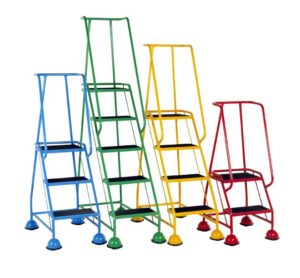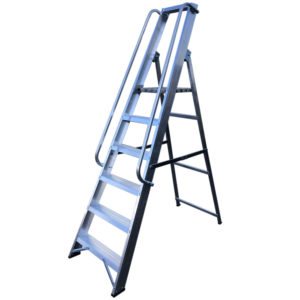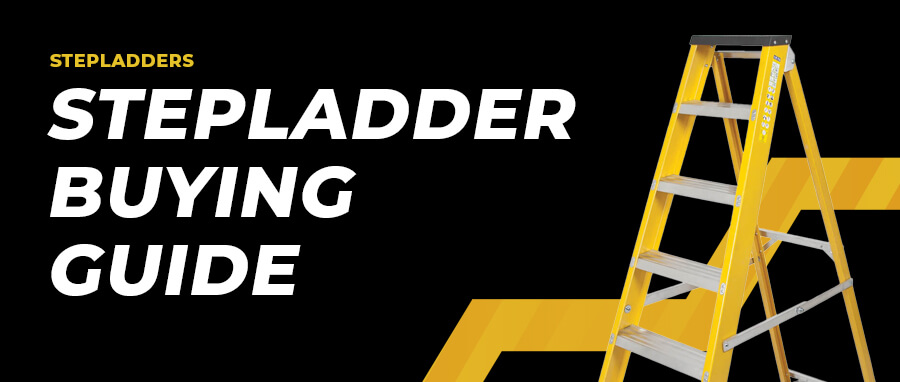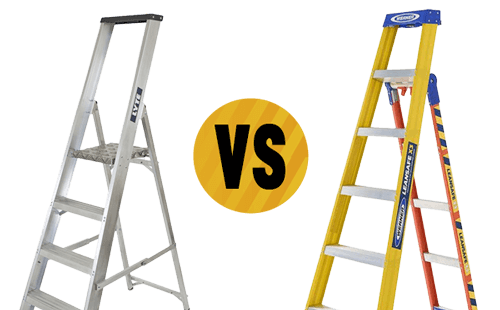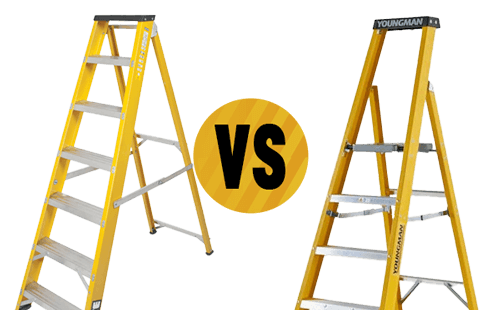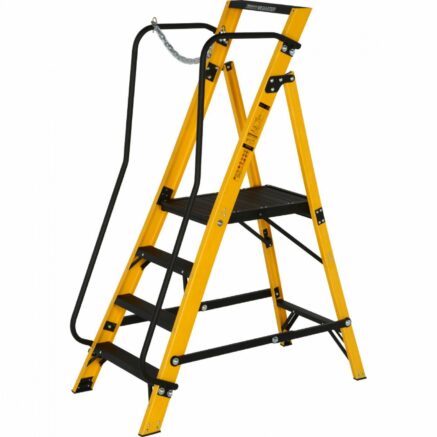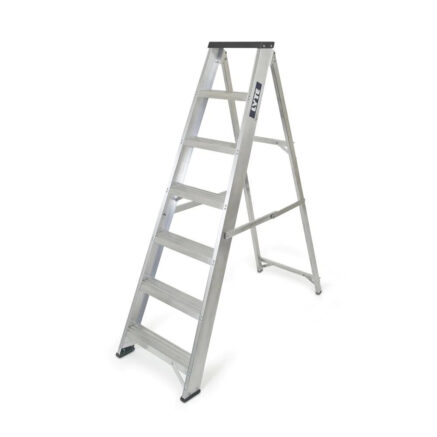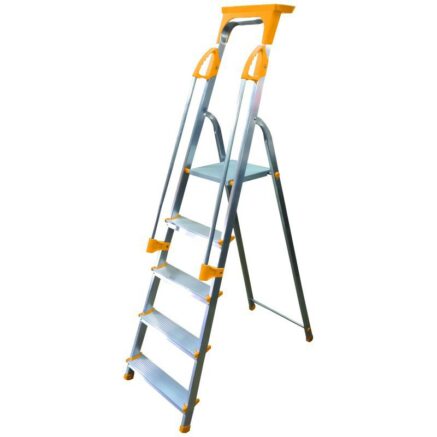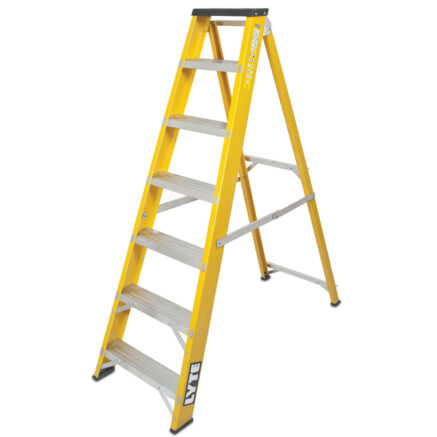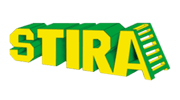There are quite a few different types of step ladders available for sale these days. We understand with all these different types it can get a little confusing, so please read below a breakdown of all the different types we offer! By the end of this little read you will fully understand what step ladder is perfect for your needs.
Stepladders can be defined by 2 key components. Choose an option below to find out more.
Material

Glass Fibre (GRP)
Aluminium
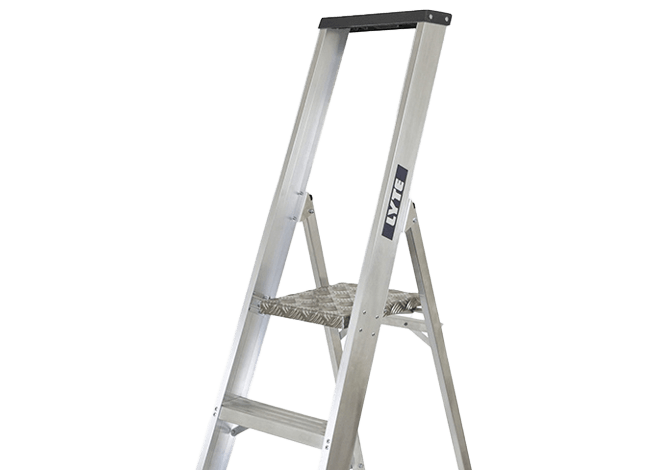
Did you know?

Type
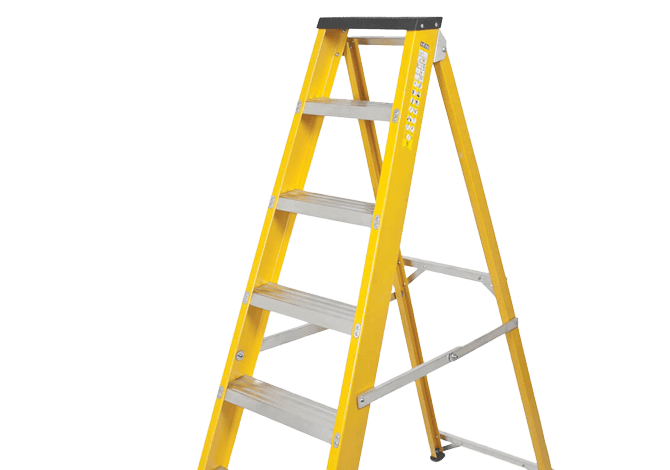
Swingback
Platform
Whilst on the subject of treads please note the platform, or top step, is included in the number of treads/steps in the description.

Guidelines for Safe Stepladder Use
All stepladders are manufactured to EN131 standard and while BS2037 and BS1129 have been withdrawn, ladders originally made to these standards prior to their withdrawal may still be used subject to following the user instructions and guidance on safe use.
When using a stepladder to conduct a task be sure to keep in mind the following safety points:
Although this list is not exhaustive, an element of common sense should be always used.

